IS MY BREATHING LEADING TO
LOWER BACK PAIN
There are many causes of lower back pain. One of the more common causes that is relatively unknown, is how you breathe!
Breathing explained
- The normal breathing pattern is called diaphragmatic breathing, where the diaphragm drops down, air fills the lungs, and you get a full capacity of oxygen into the lungs. When the diaphragm drops down, it increases stability in the lower back itself. It creates a pressure system that helps to stabilize the lumbar spine. The same way adding air into any pressure system creates more stability.
- Most people have become “chest breathers”-where the chest rises and accessory muscles are used to lift the rib-cage to allow for enough air into the lungs. The accessory muscles include the scalenes, traps, and upper back muscles. This can be one of the reasons why you may also feel chronic neck tension or muscle aches. When you chest breath, and the ribcage rises, the pressure does not drop down to the lumbar spine, and the muscles and joints have less stability from breathing, making them work harder to stabilize the lumbar spine.
- This is why powerlifters will stabilize their lower backs before they lift with a large and held in breath. With less stability in the abdomen from chest breathing, more stability is needed from the muscles and joints of the lower back. Now these are small amounts and changes, but since you take over 20,000 breaths per day…. This can add up quickly and be a large component to your back pain.
What to do
- Place your hand on your chest, and the other on your stomach. Now take a breath in.
- If the chest rises as you inhale, you are a chest breather, which is the improper breathing pattern.
- If your stomach expands outward as you inhale, you are breathing correctly, or performing diaphragmatic breathing.
There is a simple exercise you can do to develop your proper breathing pattern. To perform this, lay on the floor or mattress and place one hand on your chest, and another on your stomach/lower abdomen.
From here, take a deep breath in. You should be able to feel your abdomen rise upward, and your chest should not move at all. If your chest does move, continue to work until the chest is still and the abdomen is the only part moving during the breathing pattern.
Use this technique at night before bed and right away in the morning. Perform anywhere from 10 to 50 repetitions. It is also a good tool to help lower anxiety before going to bed and while waking up.
By working and concentrating on creating a new breathing pattern, you can increase stability in your lower back, and decrease your odds of developing back pain.



